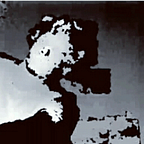Search Engine Optimization for the Ocean
We are doing a project that we think is important. WWF Hong Kong and MakerBay (Cesar Harada) are developing a sensor network to understand how trash moves from the street side, into the drain, into rivers, estuaries and the ocean. The network comprises of about 100 tracking devices — round shaped ocean drifters. The devices are GPS enabled and send their locations via 3G network, which is then aggregated and displayed on an online map.
In our efforts to make the devices as environmentally friendly as possible, we decided to encase them in a waterproof enclosure made out of coconut shells and paraffin wax.
We want the world to know about our project: Marine Litter Detective!
So, it’s time for some SEO (Search Engine Optimisation)! We are learners so here are some resources I looked into to make sure people interested in #ocean #waste can find our work:
1. Registering your Domain Name on Google
This is a legacy trick which dates back to the original of Google. The following webpage shows up a dialog box on which you can manually register the link to your website on Google’s Database! How awesome is that? Thanks to Cesar for this one.
2. Google Webmaster — Search Console
Google Webmaster is a tool for obtaining insight into Google’s Database about your own website. You can submit Sitemaps, change the target country of you Website, check how many of your pages have been indexed etc.
https://www.google.com/webmasters/#?modal_active=none
3. Google Analytics
Often confused with Webmaster, Google Analytics is in reality completely different. It is a tracking system that allows you to collect various data from the people visiting your website — the country, browser, network they accessed the webpage from. It also renders graphs about statistics such as the percentage of new users and their bounce-back rate. Pretty neat!
https://analytics.google.com/analytics/web/
4. Meta tags
I am not satisfied unless I get my hands dirty and play with the website code. Meta tags are HTML tags included at the top of the HTML file which provide Google and other search engines with metadata about the website. It can contain information such as the description, author andkeywords about the webpage.
<meta charset=”UTF-8">
<meta name=”description” content=”Free Web tutorials”>
<meta name=”keywords” content=”HTML,CSS,XML,JavaScript”>
<meta name=”author” content=”John Doe”>
</head>
5. Facebook OpenGraph
Opengraphs is a toolkit for integrating your ‘App’ with Facebook. It makes your webpage an ‘object’ according to the specifications you provide on the ‘og’ meta tags, so that it can easily be shared on Facebook.
https://developers.facebook.com/docs/sharing/opengraph
http://ogp.me/
6. Twitter Cards
Twitter cards, much like Facebook Opengraphs is the Twitter framework for creating objects out of apps and webpages.
https://dev.twitter.com/cards/overview
7. Like and Share Buttons
You can also include Facebook, Twitter and G+ like and share buttons. Not only does this increase the number of meta tags, it also helps provide your webpage with some credibility on Google and other search engines’ databases.
8. Robots.txt
This is the file which provides instructions to the crawlers which visit your website. You can allow/disallow pages/data the crawlers can access. Refer to the following webpage on how to configure your robots.txt file.
https://moz.com/beginners-guide-to-seo/search-engine-tools-and-services
With these 8 steps, we hope to increase the viewership of our webpage and help us gain further collaborators. For more information about Marine Litter Detective, checkout the following links:
https://makerbay.github.io/Marine_Litter_Detective/
https://github.com/MakerBay/Marine_Litter_Detective
